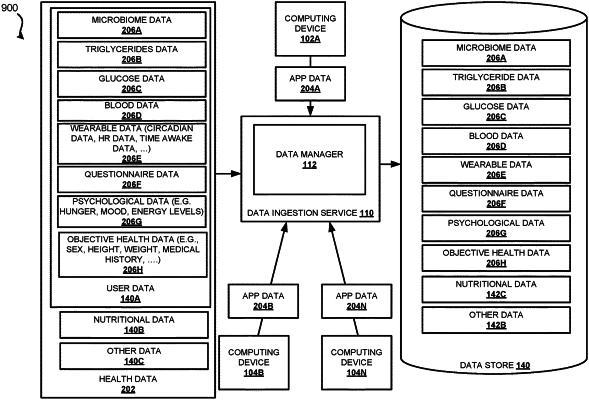| CPC G16H 20/60 (2018.01) [G16H 40/63 (2018.01)] | 28 Claims |

|
1. A method, comprising:
accessing food data associated with one or more foods;
accessing first user data associated with at least a first user or users;
training, using biological measurements of the first user or users, at least a first portion of the food data associated with one or more first foods and the first user data, a first machine learning mechanism to output a plurality of predicted properties for the first user or users including at least two of:
a first blood sugar stress prediction score associated with the one or more first foods and personalized for the first user or users,
a first blood fats stress prediction score associated with the one or more first foods and personalized for the first user or users,
a first gut health impact prediction score associated with the one or more first foods and personalized for the first user or users, and
a first hunger prediction score associated with the one or more first foods and personalized for the first user or users;
training a second machine learning mechanism to output a first food score that is personalized for the first user or users, the food score based at least in part on the plurality of predicted properties for the first user or users;
accessing second user data associated with a second user;
inputting at least a second portion of the food data for one or more second foods and the second user data to the first machine learning mechanism;
receiving, from the second machine learning mechanism, a second food score that is personalized for the second user, the second food score based at least in part on the plurality of predicted properties for the second user; and
causing the second food score to be presented within a user interface to the second user.
|